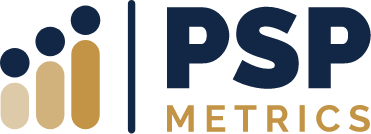How to Build Inclusive Career Development Programs
The career development process is typically based on the notion of person-role fit and involves identifying an individual’s skills, abilities, and interests; understanding personality, values, and beliefs; and then matching these variables with appropriate potential jobs or next-steps in their career development journey. However, research has revealed that, while this process holds true, organizations need to engage in the development of diverse employees through culturally competent career development program design and objective assessment of role-fit.
Program Design Considerations
Organizations need to take steps to ensure that career development programs and processes are culturally competent and incorporate appropriate instruments to ensure inclusion of all diverse candidates, as well as equitable access and consideration for both lateral moves and promotions. Most companies address improvements to diversity, equity, and inclusion within the company through training and internally promoting the importance of DEI through listening session or talking about creating an open culture and inclusive behaviors. That’s a start, but to truly ensure that diverse talent is included, organizations need to be intentional about designing opportunities for employees to identify potential next-steps in their career development process, including exploration of careers previously not considered, and to reach higher levels of responsibility or leadership within the organization.
Helping employees from racially diverse background to develop their careers may include helping them consider career paths that they have not previous considered available to them. Research has shown that racial identity has a significant impact on career choice foreclosure – the tendency to prematurely commit to a career choice without prior exploration of all available career possibilities. One cannot explore and pursue a career if that organization isn’t inclusive.
Dominant culture also presents a barrier to career progression. As stated in v50 no. 4 of the Career Development Quarterly, the belief that “…occupational success can be largely attributable to individual merit has never applied to everyone because of pervasive and powerful contextual barriers”, which include racial and gender discrimination, as well as socioeconomic status. These diversity factors influence such things as world view (individualist – collectivist), personal and workplace values, and even communication style. If divergent from the dominate culture, these differences may create blind spots in program design or participant selection.
How Talent is Assessed Matters
If organizations are not intentional about ensuring that DEI is part of all talent development strategies and career development programming, then the organization stands to suffer significant performance and, ultimately, financial consequences.
- A 2019 Gartner study found that gender-diverse and inclusive teams outperformed their less inclusive counterparts by 50%.
- Companies with more diverse leadership teams report higher innovation revenue—45% of total revenue versus just 26%, according to a 2018 BCG report.
If we look just at succession planning, for example, most succession planning processes includes use of the 9-box and talent calibration meetings to establish a common understanding of who is a high potential and what development they need to become ready for that next level leadership role. That’s great, except most 9-box ratings are done by the manager in a vacuum of objective data (and no, performance management scores do not count as objective data). If the group participating in the talent calibration is not racially diverse, the evaluation of potential is already skewed. This means that there is significant risk that diverse top talent is going unidentified. Furthermore, if most organizations consider aspiration to next level leadership in the talent calibration discussions, given the role racial identity plays in early career foreclosure, one must ask how is the organization ensuring that all racially diverse employees see next level management as an option? Simply communicating open positions is not enough. What culturally competent and concrete actions are being taken?
How can an organization begin to combat this problem? Using objective assessments during the process to uncover hidden top talent based on abilities and desired behaviors is a great place to start. By defining what behaviors and abilities successful leaders possess and then assessing internal talent to find those hidden gems who can be actively developed to lead the organization forward is a step in the right direction to becoming one of those companies who is performing ahead of their competition.
Check out this short video on improving DEI efforts from PSP President, Donnie Bedney III.
PSP Metrics has been at the forefront of science-backed employee assessments and measurement systems for over 75 years. Our mission has always been to help give you a competitive business advantage through your company’s most valuable resource — your people.

Dr. Nicole Scott
Dr. Nicole C. Scott is a Principal Psychologist at PSP Metrics. Her expertise is in talent gap analysis and development, individual performance development, team development, employee engagement, DEI, and coaching (individual, team, and group), with a deep expertise in job evaluation, competency modeling, succession planning, and both high potential mid-level leader development and frontline worker career development programs. Dr. Scott can be contacted at: nscott@pspmetrics.com or via LinkedIn.
Comments are closed.

